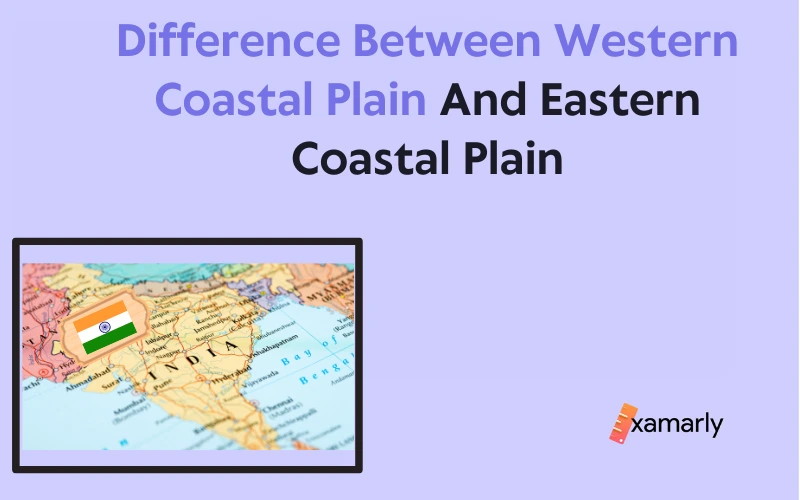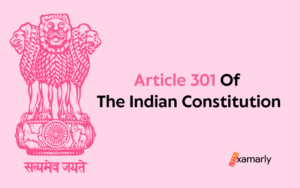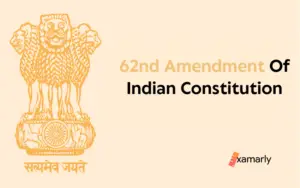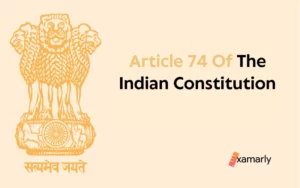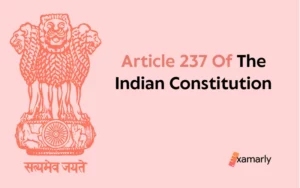India is a vast, culturally, and geographically diverse nation. The coastal regions of India are no exception to this diversity and offer many different landscapes for exploration. But what exactly is the major difference between Western Coastal Plain and Eastern Coastal Plain?
The two Indian coastlines, the West Coast Plain in the western parts of India (the states of Gujarat, Maharashtra, Goa, Karnataka, and Kerala) and the Eastern Coast Plain in eastern parts of India (the states of Odisha, Tamilnadu, Andhra Pradesh and also a part of West Bengal), offer various geographical features that make these two distinctive from each other.
The differences between Western Coastal Plain and Eastern Coastal Plains are extensive but have distinct geographical features which make them unique from one another.
In this article, we will explore what specifically separates these two areas and examine why they should be considered special places. This piece of writing will provide useful knowledge that will help you in your UPSC Exam Preparation.
- Coastal Plains
- Western Coastal Plains
- Eastern Coastal Plains
- Difference Between Western Coastal Plain And Eastern Coastal Plain
- Significance
- Conclusion
- FAQs
- What Are The States That The Western Coastal Plains Traverses?
- What Is The Width Of The Western Coastal Plains And How Long Does It Stretch?
- What Is The Significance Of The West Continental Shelf In The Western Coastal Plains?
- What Are The Divisions Of The Western Coast?
- What Are The States That The Eastern Coastal Plains Traverses?
- What Are The Main Rivers That Form Deltas In The Eastern Coastal Plains And What Is The Significance Of These Deltas?
- How Is The Eastern Coastal Plain's Coastline Formed?
- What Are The Three Portions That Make Up The Eastern Shore?
- What Is The Most Significant Element Of The Eastern Coastal Plains?
- What Are The Differences Between The Western Coastal Plains And The Eastern Coastal Plains?
- What Does "Submerged Coastal Plains" Mean?
- What Are The Characteristic Features Of Western Coastal Plains?
- What Is The Importance Of The Western Coastal Plain?
- Why Does Western Cosat Have No Deltas?
Coastal Plains
The coastal plains of India are a narrow strip of land that stretches along the country’s eastern and western seaboard. These plains are formed by the deposition of sediments by various rivers and are characterized by their flat terrain and fertile soil.
The Eastern Coastal Plain, also known as the Coromandel Coast, extends from West Bengal to Tamil Nadu and is known for its sandy beaches and mangrove forests.
The Western Coastal Plain, also known as the Konkan Coast, stretches from Gujarat to Kerala and is known for its rocky cliffs and coconut groves.
The coastal plains of India are important for agriculture, particularly for the cultivation of rice, coconut, and other tropical crops. They are also home to a diverse range of flora and fauna and support a large population of fisherfolk and coastal communities.
Western Coastal Plains
- Karnataka, Goa, and Maharashtra are some of the states that are traversed by the Western Coastal Plains as they make their way from southernmost Kerala to northernmost Gujarat.
- The western coastal plains of India, which range in width from 10 to 25 kilometers, cover around 1500 kilometers from north to south.
- In close proximity to the coast of Bombay is where the West Continental Shelf reaches its greatest width. Oil is abundant in this area.
- Along the Malabar Coast, there are a number of stunning lagoons, which contribute to the region’s standing as a well-known tourist attraction.
- It’s feasible to encounter the coastline of submergence in the western part of the coastal plains.
- A city on India’s west coast called Dwaraka, which used to be in the interior of the nation, is thought to have submerged under the water.
- It is a narrow area that has favorable natural circumstances for the development of ports and harbors as a result of the submergence.
- The western shoreline is more constrained than the eastern.
- The largest lake along this shore is Vembanad Lake.
- There are four divisions of the western coast:
- Konkan coast
- Malabar coast
- Kachchh and Kathiawar coast
- Kanada coast
Regional Titles Of India’s West Coast
Malabar Coast = Kerala and Karnataka Coast; Konkan Coast = Maharashtra Coast and Goa Coast.
Eastern Coastal Plains
- Andhra Pradesh and Odisha are two of the states that are traversed by the eastern coastal plains as they make their way from the state of West Bengal in the north to the state of Tamil Nadu in the south.
- All four major rivers—the Mahanadi, the Godavari, the Krishna, and the Cauvery—have created deltas along the eastern coastal plain.
- Agriculture flourishes in the deltas, which are known for their high levels of fertility and output. The Krishna River delta is therefore referred to as the “Granary of South India.”
- Continental drift, which involves the movement of tectonic plates, is responsible for the straight shoreline.
- The economic as well as strategic significance of India is elevated as a result of its proximity to the Indian coasts.
- The eastern coastal plains are home to a number of large brackish water lakes, some of which are Lake Kolleru, Lake Chilka, and Lake Pulicat, amongst others.
- Three portions make up the eastern shore:
- The Coromandel coast
- The Utkal coast
- The Andhra coast
Regional Titles Of India’s East Coast
- It is referred to as the Utkal coast in Orissa (Odisha).
- The Andhra coast extends from the Utkal plain’s southernmost point.
- The coast of Tamil Nadu is located south of the Andhra plain.
- Coromandal Coast or Payan Ghat is the collective name for the coastlines of Tamil Nadu and some of Andhra.
Difference Between Western Coastal Plain And Eastern Coastal Plain
| Eastern Coastal Plain | Western Coastal Plain |
|---|---|
| Between the Eastern Ghats and the Bay of Bengal is a significant stretch of land in India known as the Eastern Coastal Plains. | There is a large coastal plain called the Western Coastal Plains that stretches from the west coast of India to the Western Ghats highlands. |
| In comparison to the Western Coastal Plain, it extends from Tamil Nadu to West Bengal and is a wider and more level surface. | From Gujarat in the north to Tamil Nadu in the south, the western coast of India stretches. |
| The eastern coastal plains’ most significant element is the Chilika Lake, which is situated in the state of Odisha. | It is known as the Konkan Coast in the northern half of the shore, the Kanara Coast in the middle portions, and the Malabar Coast in the southern stretch. |
| River deltas like those of the Godavari, Mahanadi, Krishna, and Kaveri define this coast. | Tapi, Narmada, Mandovi, and Nuari are the major rivers. |
| The eastern plain is much wider than the western one, and it reflects an emerging shore. | Coastal lowlands that are underwater can be found all along the western shore. Dwaraka, a city that used to be on the Indian subcontinent but is now situated on the west coast, is rumored to be underwater. |
| The Eastern Coastal Plain can be found stretching from the Bay of Bengal in the east to the Eastern Ghats in the west in India. | The Western Coastal Plain can be found in the space between the Western Ghats hills and the Arabian Sea. |
| Wide deltas are created by the large rivers present in the Eastern Coastal Plains. | In the Western Coastal Plains, deltas are never formed by small rivers. |
| The Eastern Coastal Plain is quite productive because of its alluvial soil. | The Western Coastal Plain is generally unproductive land for agriculture, with the exception of the Malabar Coast in the south of India. |
| The eastern coastal plains have fairly moderate slopes with a height of roughly 200-300m. | Western coastal plains are very steep and are pierced by mountain ranges. |
Significance
- Rich, fertile soils that are conducive to agriculture predominate across the majority of India’s coastal plains. Rice is the main crop grown in these regions.
- The numerous ports, both large and small, that surround the Indian coastline support trade.
- Massive quantities of mineral oil, which can be employed as a source of marine economy, are allegedly present in the sedimentary rocks of these coastal plains.
- Fishing has developed into a key way for many people who live along the coast to make a living for themselves.
- Mangroves, lagoons, estuaries, and coral reefs abound along India’s coastal plains, making the area a favorite destination for vacationers. They are also rich in coastal and marine ecosystems.
Conclusion
In conclusion, the Western and Eastern Coastal Plains of India offer a diverse range of physical characteristics, ecological systems, and human impacts. From the towering sand dunes and rugged cliffs of the Western Coastal Plains to the gently rolling hills and lush marshes of the Eastern Coastal Plains, these regions offer a unique and captivating landscape.
The Western Coastal Plains are traversed by states such as Karnataka, Goa, and Maharashtra, and it is known for its oil-rich West Continental Shelf. The Eastern Coastal Plains, on the other hand, are traversed by states such as Andhra Pradesh and Odisha and are known for their fertile river deltas and the Chilka Lake.
These two regions, separated by the vast expanse of the continent, have distinct physical characteristics, ecological systems, and human impacts, but both are united in the diversity and beauty of their coastal regions.
FAQs
What Are The States That The Western Coastal Plains Traverses?
Karnataka, Goa, and Maharashtra are some of the states that are traversed by the Western Coastal Plains.
What Is The Width Of The Western Coastal Plains And How Long Does It Stretch?
The Western Coastal Plains range in breadth from 10 to 25 kilometers, and from north to south, they cover around 1500 kilometers.
What Is The Significance Of The West Continental Shelf In The Western Coastal Plains?
The West Continental Shelf reaches its greatest width in close proximity to the coast of Bombay and it is abundant in oil.
What Are The Divisions Of The Western Coast?
The divisions of the Western Coast are the Konkan coast, Malabar coast, Kachchh and Kathiawar coast, and Kanada coast.
What Are The States That The Eastern Coastal Plains Traverses?
Andhra Pradesh and Odisha are two of the states that the Eastern Coastal Plains traverses as they make their way from the state of West Bengal in the north to the state of Tamil Nadu in the south.
What Are The Main Rivers That Form Deltas In The Eastern Coastal Plains And What Is The Significance Of These Deltas?
The main rivers that form deltas in the Eastern Coastal Plains are the Mahanadi, the Krishna, the Godavari, and the Cauvery. These deltas are known for their high levels of fertility and output, with the Krishna River delta being referred to as the “Granary of South India.”
How Is The Eastern Coastal Plain’s Coastline Formed?
The Eastern Coastal Plain’s coastline is straight as a result of tectonic plate movement during the continental drift.
What Are The Three Portions That Make Up The Eastern Shore?
The three portions that make up the Eastern shore are The Coromandel coast, The Utkal coast, and The Andhra coast.
What Is The Most Significant Element Of The Eastern Coastal Plains?
The most significant element of the Eastern Coastal Plains is the Chilika Lake, which is situated in the state of Odisha.
What Are The Differences Between The Western Coastal Plains And The Eastern Coastal Plains?
The Eastern Coastal Plains are wider and more level than the Western Coastal Plains. The Eastern Coastal Plains stretch from Tamil Nadu all the way to West Bengal, while the Western Coastal Plains stretch from the west coast of India to the Western Ghats highlands. The Eastern Coastal Plains have a significant stretch of land with the Chilika Lake, while the Western Coastal Plains have a number of stunning lagoons along the Malabar Coast. The eastern shoreline is more constrained than the western and the largest lake along the western shore is Vembanad Lake. The eastern coast strengthens the strategic and economic significance of peninsular India, while the western coast has a favorable natural circumstance for the development of ports and harbors as a result of the submergence.
What Does “Submerged Coastal Plains” Mean?
Submergent coasts, often referred to as drowned coastlines, are stretches of shoreline that have been submerged under the water as a result of isostasy or eustasy-induced relative rise in sea levels. The western coastal plains may contain submerged coastal plains. It is believed that Dwaraka, a city on the west coast of India that was formerly a part of the country’s interior, has sunk beneath the water.
What Are The Characteristic Features Of Western Coastal Plains?
The salient features are as follows:
a. These are quite steep and are cut across by mountain ridges.
b. Western Plains are home to numerous natural harbors.
What Is The Importance Of The Western Coastal Plain?
Because of where they lie on the plateau’s western edge, the Western Coastal Plains got their name. For people and other creatures to live, these plains offer the best biodiversity and climate. Most people who reside near the shore are employed in the fishing sector. Along the shorelines, a number of seaports have sprung up over time. The nation benefits from these ports as it engages in maritime commerce abroad.
Why Does Western Cosat Have No Deltas?
The steep slope of the Western Ghats is a contributing factor to the steep gradient of the rivers that run through the western coastal plains, which results in the western coastal plains not having any well-developed deltas.


